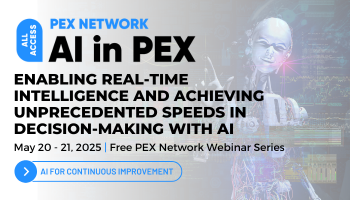Schaeffler & Accenture pave way for industrial humanoid robots with NVIDIA & Microsoft tech
Schaeffler is leveraging physical AI, digital twins and humanoid robots to enhance operational excellence across its global manufacturing network
Add bookmarkListen to this content
Audio conversion provided by OpenAI

Schaeffler AG is working with Accenture to reinvent industrial automation with physical artificial intelligence (AI) and robotics.
At Hannover Messe 2025, the companies showed how to optimize various work scenarios, from human-centric to human/robot collaboration and full automation, with the latest simulation, AI and data technologies from NVIDIA and Microsoft.
“As a leading motion technology company, Schaeffler leverages disruptive innovations such as physical AI, digital twins and humanoid robots to enhance operational excellence across our global manufacturing network,” said Andreas Schick, chief operating officer at Schaeffler AG.
Don't miss any news, updates or insider tips from PEX Network by getting them delivered to your inbox. Sign up to our newsletter and join our community of experts.
The power of AI-powered simulations
Physical AI is reinventing industrial automation as it offers efficient ways to train and control entire fleets of AMRs, mobile adaptive manipulators and general-purpose humanoid robots, said Patrick Vollmer, global industry group lead, industrials at Accenture. “Our collaboration with Schaeffler, Microsoft and NVIDIA shows how clients and strategic partners can co-innovate on turning emerging technologies into solutions to help manufacturers tackle flexibility, productivity and workforce challenges.”
The companies developed a proof-of-concept (PoC) demonstrating the benefits AI-powered simulations can bring to Schaeffler’s factories and distribution centers on three levels.
Planning the ideal facility
Accenture’s capability to build digital twins of factories and warehouses on the NVIDIA Omniverse development platform allows Schaeffler to simulate and identify the best layout for facilities up-front and thus reduce commissioning times. This includes virtually positioning production lines and kitting stations for dynamic material flow and seamless collaboration between humans and robots.
Virtual commissioning can also help Schaeffler determine the right degree of automation for each facility. The PoC covers scenarios with different types and sophistication of physical AI: primarily manual work, AMRs supporting transport tasks and adaptive manipulators such as EMMA and general-purpose humanoid robots in highly automated facilities.
Read how Amazon uses automation and robotics to improve warehouse efficiency
Enabling physical AI and general-purpose humanoid robots
Accenture and Schaeffler are starting to adopt Mega, an NVIDIA Omniverse Blueprint, to test robot fleets, including general-purpose humanoid robots, in industrial digital twins of factories and warehouses.
The PoC shows Agility Robotics’ Digit performing material handling, such as tote handling and transport to kitting and commissioning areas. It also demonstrates how Sanctuary AI’s multi-dexterous humanoid robot, Phoenix, learns real-world tasks in Omniverse by observing simulations. An example is compiling spare part kits for individual orders in one of Schaeffler’s spare part centers.
“Tomorrow’s factories require complex collaboration between humans, industrial automation systems and multi-robot fleets,” said Mike Geyer, head of digital twins at NVIDIA. “By using Mega and NVIDIA Omniverse to simulate and test various types of robots at scale in industrial digital twins, Accenture and Schaeffler are reinventing their industrial operations with physical AI.”
Join us at All Access: Business Transformation 2025 to learn how to future-proof your business and accelerate growth
Optimizing live robotics operations
Accenture and Avanade, its joint venture with Microsoft, are collaborating with Schaeffler to use simulated data from Omniverse to optimize the physical performance of robots in the warehouse and on the shopfloor – for example, to avoid congestion. Data from various simulated scenarios is fed into Microsoft Fabric, a unified, AI-powered data platform. Site managers and workers responsible for operations can then compare key performance indicators, such as availability, utilization and overall equipment effectiveness for these scenarios to identify potential issues in time to act.
Accenture and Avanade developed a solution for Schaeffler’s production site Schweinfurt, Germany, that uses MS Fabric in combination with a generative AI-powered factory operations agent. It helps staff gain production insights and solve issues faster by letting them ask questions in natural language.
Moving forward, virtual factories can be onboarded, allowing engineers and planners to interact intuitively with simulation data of robots and production systems, for example, by pulling up dashboards and changing simulation parameters using voice commands.
All Access: AI in PEX is 2025

All Access: AI in PEX 2025 is designed to address these challenges and empower organizations to successfully integrate AI into their process improvement initiatives. The content series will bring together industry experts, thought leaders, and practitioners to share insights, best practices, and real-world case studies.
Register Now

















